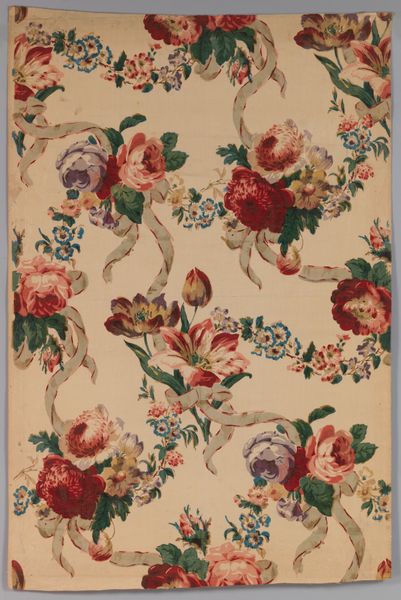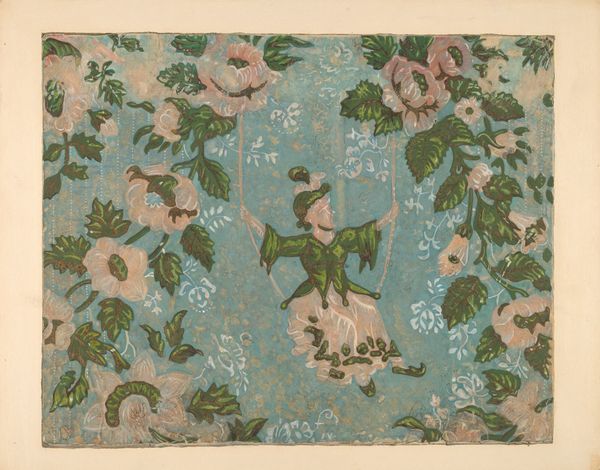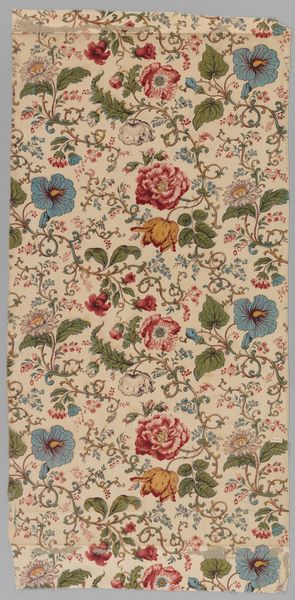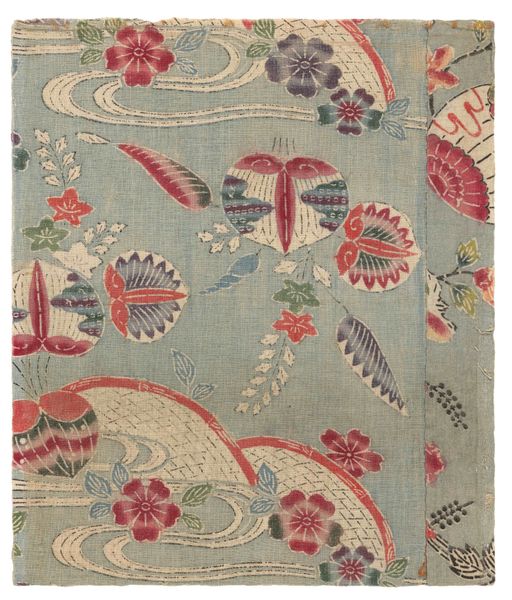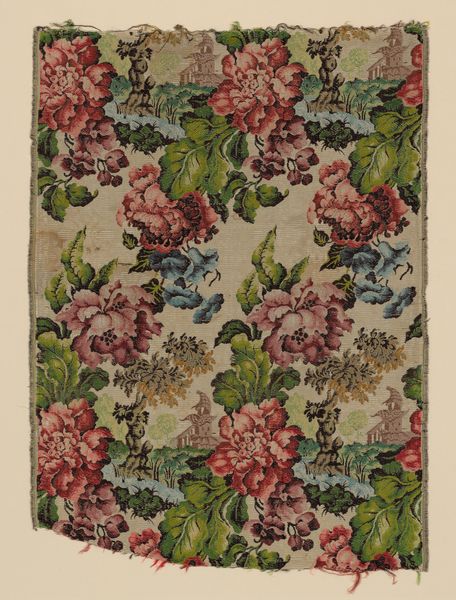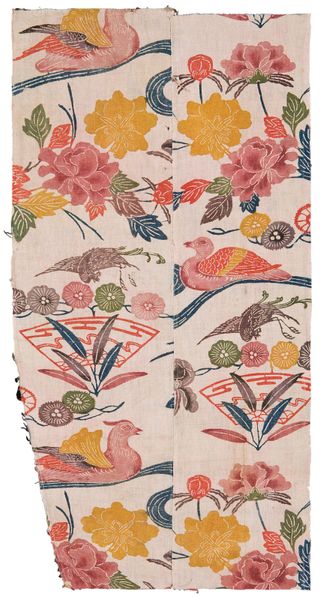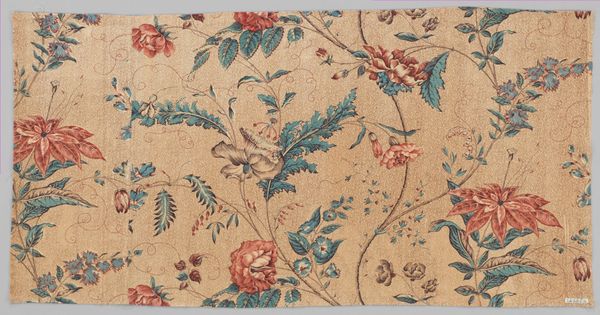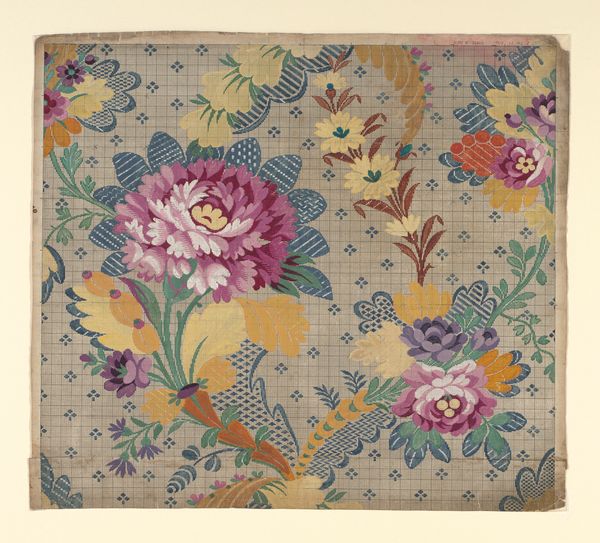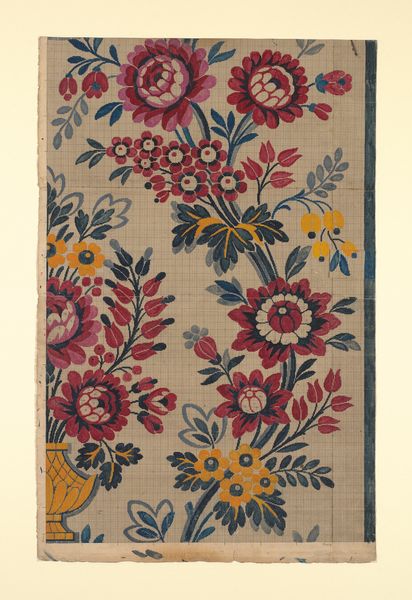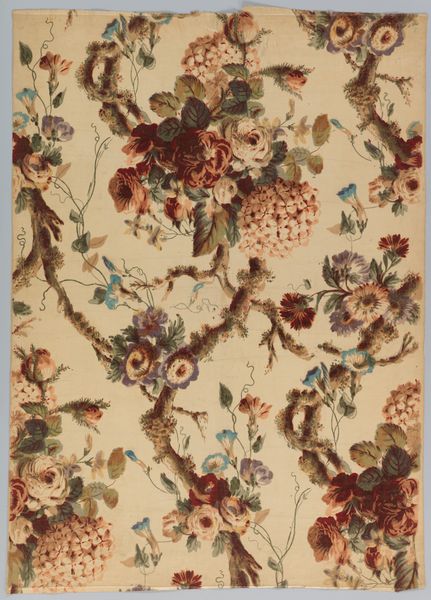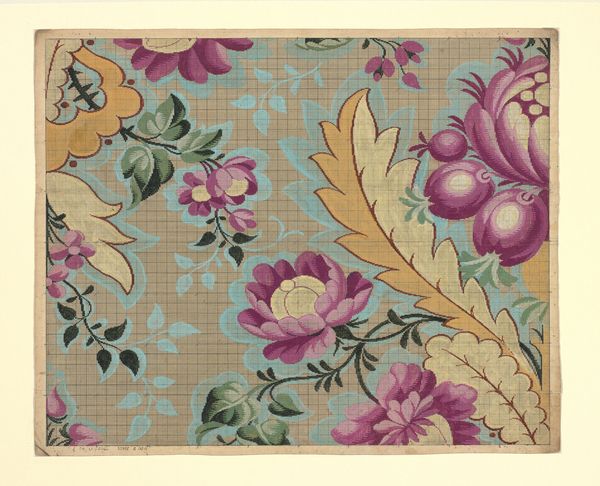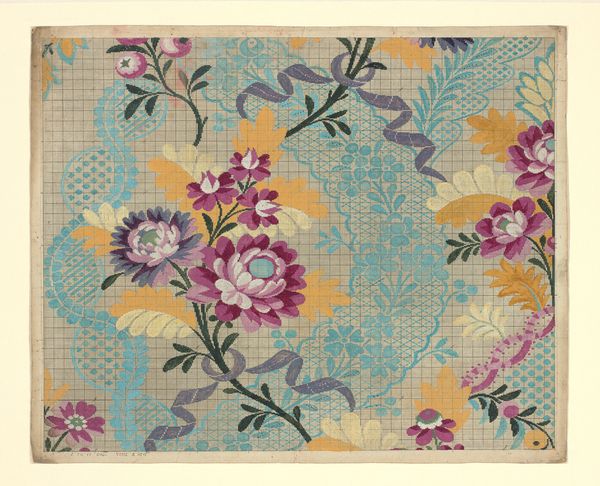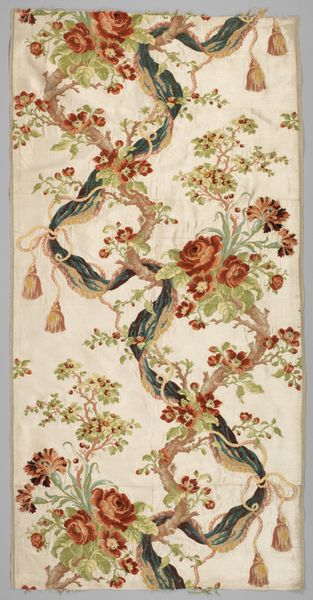
fibre-art, weaving, textile
#
fibre-art
#
naturalistic pattern
#
organic
#
weaving
#
textile
#
organic pattern
#
romanticism
#
flower pattern
#
decorative-art
Dimensions: height 175 cm, width 54.5 cm
Copyright: Rijks Museum: Open Domain
Editor: This is "Zijdeweefsel met bloempatroon, onder meer met pioenrozen," or "Silk fabric with flower pattern, including peonies," made around 1840-1850 by Tassinari & Chatel. The pale blue silk is richly decorated with colourful floral arrangements and gilded swirls. It's absolutely beautiful, and looks very luxurious! What can you tell me about it? Curator: It's not just beautiful; it's a testament to the intense labour and highly skilled artisanship woven directly into its threads. Look closely. The vibrant colors weren't simply applied; they were meticulously created and integrated into the fabric structure itself. Consider the conditions of the workshops, the specific dye recipes used, and how this type of textile production was organized socially and economically at the time. What does the textile tell us about its consumption? Editor: That's interesting. So, you're saying to look at who was making this, how, and what it represents about the world around them. The weaving itself is an expression of the social structure of the era? Curator: Precisely. Think about the hierarchy within the Tassinari & Chatel workshop, from the designers who conceived the pattern to the weavers who operated the looms. How might their individual experiences and status have been embedded, unconsciously or otherwise, within the work? And furthermore, how was such luxury consumed? Editor: It makes me think about where the raw materials came from, too - the silk itself, and where it was sourced. It's a global trade network captured in fabric. Curator: Exactly! And the dyes? What were they, how difficult were they to produce, and what implications did their use have for the environment and trade routes of the period? The object is beautiful, yes, but understanding its creation tells a larger story of production and consumption. Editor: I see it now. Thanks! I'll never look at decorative art the same way. Curator: Good. It is so much more than "just" decorative art. We must appreciate that what we're looking at encapsulates a whole network of material, social, and economic relationships.
Comments
No comments
Be the first to comment and join the conversation on the ultimate creative platform.
